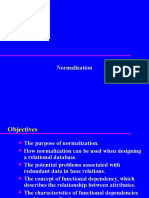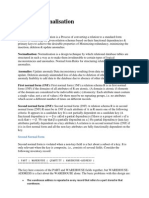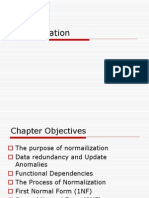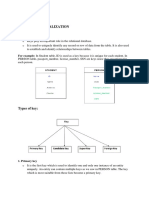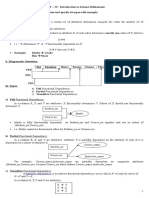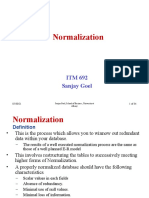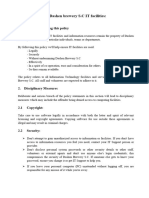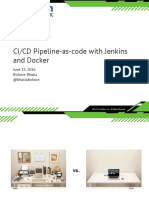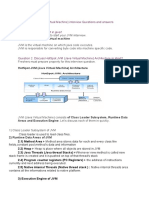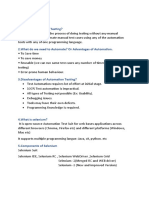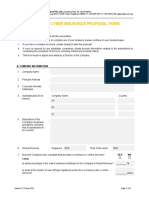0% found this document useful (0 votes)
29 views20 pagesChapter Five DB Normalization
Database normalization is a systematic process aimed at organizing data in a relational database to minimize redundancy and prevent update anomalies. It involves several normal forms, including First Normal Form (1NF), Second Normal Form (2NF), and Third Normal Form (3NF), each addressing different types of dependencies and anomalies. The ultimate goal is to ensure that all data is logically stored and efficiently accessed while maintaining data integrity.
Uploaded by
Eyob TemesgenCopyright
© © All Rights Reserved
We take content rights seriously. If you suspect this is your content, claim it here.
Available Formats
Download as PPTX, PDF, TXT or read online on Scribd
0% found this document useful (0 votes)
29 views20 pagesChapter Five DB Normalization
Database normalization is a systematic process aimed at organizing data in a relational database to minimize redundancy and prevent update anomalies. It involves several normal forms, including First Normal Form (1NF), Second Normal Form (2NF), and Third Normal Form (3NF), each addressing different types of dependencies and anomalies. The ultimate goal is to ensure that all data is logically stored and efficiently accessed while maintaining data integrity.
Uploaded by
Eyob TemesgenCopyright
© © All Rights Reserved
We take content rights seriously. If you suspect this is your content, claim it here.
Available Formats
Download as PPTX, PDF, TXT or read online on Scribd
/ 20
























